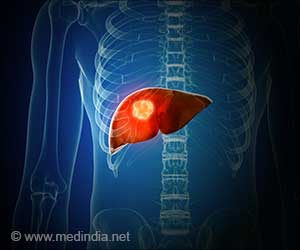Doping — the use of banned substances in competitive sports may be scrapped with the help of artificial intelligence.

‘Doping — the use of banned substances in competitive sports may be scrapped with the help of artificial intelligence, thereby making sporting competitions cleaner and fairer in the future.’





Maaß and his team have been collaborating with the World Anti-Doping Agency WADA on research projects that use AI systems the team had previously developed for Industry 4.0 applications. By feeding these systems with data from doping tests, the systems become increasingly efficient at detecting sporting fraud. Unequal chances, unfair competition, unclean sport — doping doesn’t just violate the principle of fairness, sportsmen and women who use performance-enhancing substances are putting their own health on the line.
The fight against doping remains a massive challenge and uncovering fraud in sports is both complex and costly.
Professor Wolfgang Maaß is convinced that artificial intelligence can help anti-doping officials in their fight to keep sport clean: ‘The methods of artificial intelligence can make doping checks faster and more efficient.’
Normally, Maaß and his team at Saarland University and the German Research Center for Artificial Intelligence (DFKI) use their smart data systems to introduce greater transparency into automated data-driven industrial processes (Industry 4.0), for example, by reliably predicting faults in plant equipment or forecasting problems in supply chains — and then identifying suitable solutions.
Advertisement
Professor Maaß has already cooperated with the World Anti-Doping Agency WADA on three projects and the results have clearly shown that the Saarbrücken AI systems, which had previously been trained with business process data, can quickly and reliably identify a range of fraudulent sporting activities.
Advertisement
Doping tests generate large quantities of data. For example, in-competition and out-of-competition blood and urine samples were taken over extended periods are analyzed in laboratories for signs of prohibited substances or illegal training methods.
Other information relating to the athletes is also gathered. As doping tests can occur anywhere at any time, sportsmen and women are required to report their so-called whereabouts information, which allows the athlete to be located for out-of-competition testing. All of this data can be fed into the pre-trained AI systems to check for signs of manipulation.
Using machine learning methods and deep learning strategies, the researchers can train the system so that it can consistently identify the typical patterns associated with doping in sports. The system learns to identify small but characteristic indications of doping, each of which represents a small piece of the puzzle.
To achieve this, Maaß and his team train the AI system with data from doping tests performed on a large number of athletes. The system can explore and analyze correlations in the data and can thus recognize how the individual pieces of the complex multidimensional doping puzzle fit together.
The system registers and assigns weights to data such as blood markers or urinary steroid profiles, it identifies and takes into account causal and temporal relationships found in multiple samples, and it considers the metabolic transformations that particular substances undergo as well as the interactions associated with specific performance-enhancing drugs.
Through this type of deep analysis of complex and multivariate data, the system learns to recognize when manipulation has taken place. When trained in this way, the system can identify patterns and subtle features in the digital data that indicate the irregularities and anomalies associated with doping.
A result is a tool that can indicate how likely it is that a particular dataset is a result of someone having taken prohibited substances or of having falsified a doping test in some other way.
‘To train complex models of this kind, we need far more data, especially data from positive doping tests. By using generative adversarial networks, or GAN as we call them, we can expand and enrich our data pool. Developing and testing AI models of this type is only possible when we have a thorough understanding of the data and of the underlying biological mechanisms,’ explains Wolfgang Maaß.
In 2015, Maaß cooperated with WADA to test whether his AI models were generally capable of detecting cases of erythropoietin (EPO) blood doping when fed anonymized data from biochemical analyses.
The goal of blood doping with EPO is to increase the number of red blood cells in the bloodstream so that more oxygen can be transported to the muscles to boost performance.
‘To train our model, we used data on a variety of blood parameters and data from a series of questionnaires that probed the athletes activities,’ explains Maaß. A comparison with the actual results of the doping tests showed that even at this early stage and before undergoing more specific refinements the model had an excellent success rate.
A second project with WADA confirmed the excellent forecasting qualities of the AI model. In this case, Maaß and his research team worked with the Department of Nutrition, Exercise, and Sports at the University of Copenhagen on a joint project on EPO doping.
Without having any other background information, the Saarbrücken researchers used their AI system to evaluate certain blood markers and blood parameters from different training groups with a total of 50 subjects.
The computer algorithm identified the EPO doping group and filtered it out from among the various reference groups, including one group in which the athletes had naturally higher levels of red blood cells because they had recently undergone altitude training.
In the most recent project with WADA and the Institute of Biochemistry at the German Sport University Cologne, the results of which were presented in December, specially trained computer algorithms were able to detect other forms of manipulation beyond those normally associated with conventional doping violations.
‘Our system is able to detect when urine samples have been switched,’ says Maaß.
This type of fraud, which involves swapping a ‘dirty’ urine sample from a doped athlete for a ‘clean’ one, is extremely difficult for doping investigators to detect and relies on complex lab analyses. When a deep-learning training strategy is adopted, the Saarbrücken model can recognize the typical patterns in this type of manipulation.
‘The sensitivity of our methods is already very high, as is its specificity, but we can improve it even further. This leads us to think that AI methods can be used as an effective tool to support anti-doping investigations,’ says Maaß, who now wants to deepen the collaboration with WADA and the German Sport University Cologne.
Source-Eurekalert













